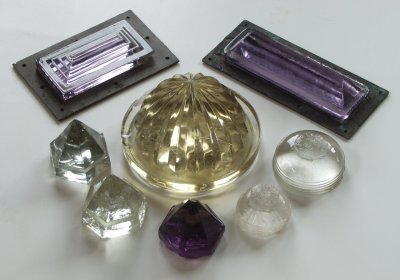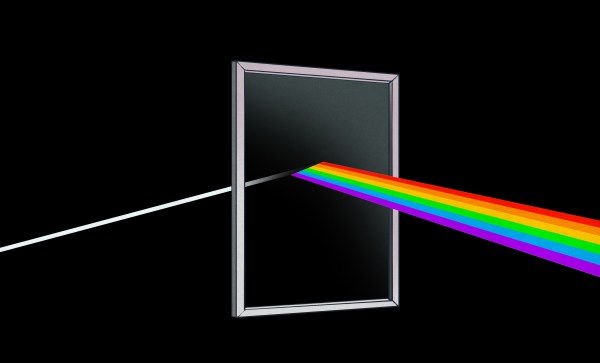The incandescent light bulb was one of the first early applications of electricity, and it’s hard to underestimate its importance. But before the electric light, people didn’t live in darkness — they thought of ways to redirect sunlight to brighten up interior spaces. This was made possible through the understanding of the basic principles of optics and the work of skilled glassmakers who constructed prism tiles, deck prisms, and vault lights. These century-old techniques are still being applied today for the diffusion of LEDs or for increasing the brightness of LCD displays.
Semantics First!
People in optics are a bit sloppy when it comes to the definition of a prism. While many of them are certainly not geometric prisms, Wikipedia defines it as a transparent optical element with flat, polished surfaces of which at least one is angled. As can be seen in the pictures below some of the prisms here do not even stick to this definition. Browsing the catalog of your favorite optics supplier you will find a large variety of prisms used to reflect, invert, rotate, disperse, steer, and collimate light. It is important to point out that we are not so much interested in dispersive prisms that split a beam of white light into its spectrum of colors, although they make great album covers. The important property of prisms in this article is their ability to redirect light through refraction and reflection.
A Safe Way to Bring Light Under Deck

One of the most important uses of prism lighting was on board ships. Open flames could have disastrous consequences aboard a wooden ship, so deck prisms were installed as a means to direct sunlight into the areas below decks. One of the first patents for deck lights “THE GREAT AND DURABLE INCREASE OF LIGHT BY EXTRAORDINARY GLASSES AND LAMPS” was filed by Edward Wyndus as early as 1684. Deck prisms had typical sizes of 10 to 15 centimeters. The flat top was installed flush with the deck and the sunlight was refracted and directed downward from the prism point. Because of the reversibility of light paths (“If I can see you, you can see me”) deck prisms also helped to spot fires under deck. Continue reading “Prism Lighting – The Art Of Steering Daylight”











